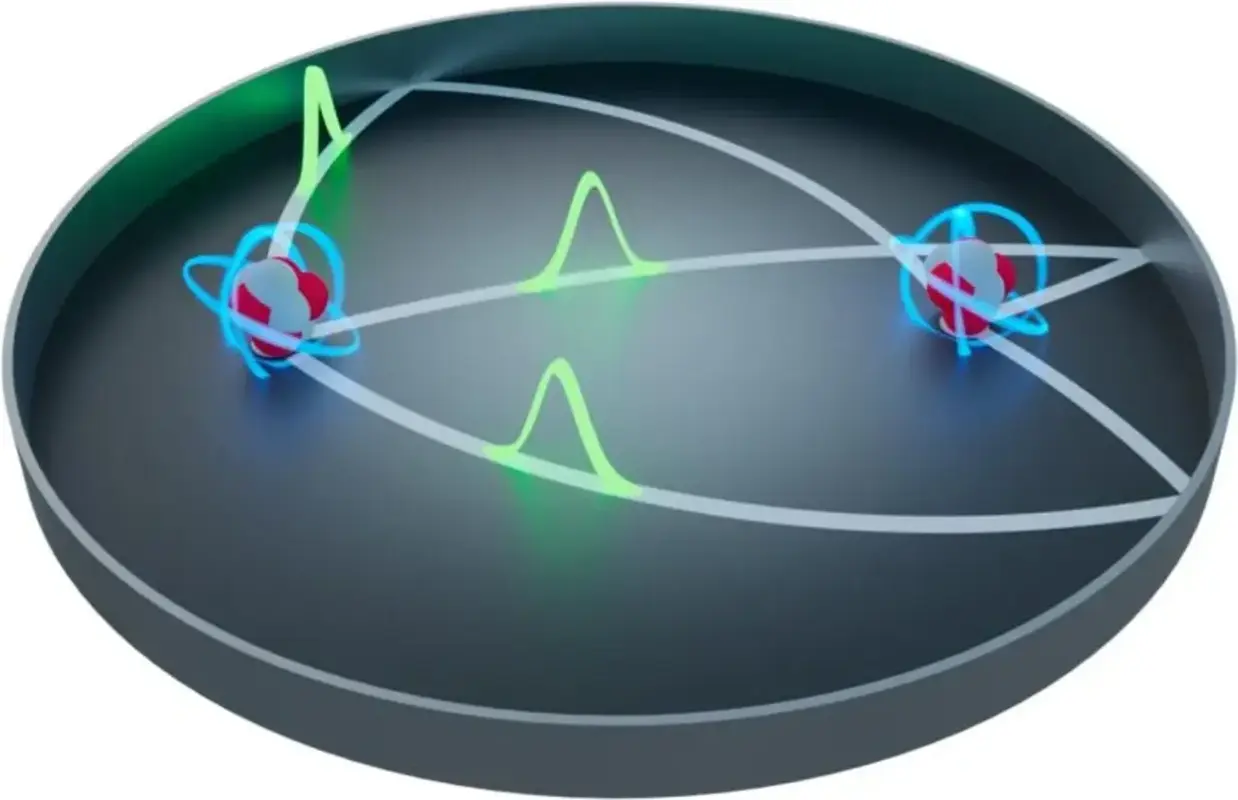Quantum Ping-Pong: A New Era of Atomic Photon Control
- January 20, 2024
- 0
Scientists have developed “quantum ping pong”: With the help of a special lens, two atoms can bounce a single photon back and forth with high precision. Atoms can
Scientists have developed “quantum ping pong”: With the help of a special lens, two atoms can bounce a single photon back and forth with high precision. Atoms can

Scientists have developed “quantum ping pong”: With the help of a special lens, two atoms can bounce a single photon back and forth with high precision. Atoms can absorb and re-emit light; This is an everyday phenomenon. But in most cases the atom emits a particle of light in all possible directions; Therefore, it is very difficult to recapture this photon.
A research team from TU Wien in Vienna (Austria) has now been able to show theoretically that, with the help of a special lens, a single photon emitted by one atom can be guaranteed to be reabsorbed by a second atom. This second atom not only absorbs the photon, but also sends it directly back to the first atom. In this way, atoms transmit the photon to each other again and again with high precision, just like in table tennis.
“If an atom emits a photon somewhere in empty space, the direction of the radiation is completely random. This makes it almost impossible for another atom far away to capture this photon again,” says Professor Stefan Rotter from the Institute for Theoretical Physics at the Vienna University of Technology. “A photon propagates as a wave, which means no one can tell exactly which direction it is traveling in. So whether or not a light particle is absorbed by the second atom is purely by chance.”
The situation is different if the experiment is carried out in a closed environment rather than in an empty space. Something very similar is known in acoustics from whispering galleries: if two people are placed in an elliptical room exactly at the focal points of the ellipse, they can hear each other perfectly, even if they whisper softly. The sound waves reflect off the elliptical wall in such a way that they meet again where the second person is standing, so that the person can hear a soft whisper just fine.
“In principle, something similar could be created for light waves by placing two atoms at the focal points of the ellipse,” says Oliver Diekmann, first author of the current publication. “But in practice, the two atoms need to be positioned very precisely at these focal points.”
Therefore, the research team proposed a better strategy based on the fisheye lens concept developed by James Clerk Maxwell, the founder of classical electrodynamics. The lens has a spatially variable refractive index. While light travels in straight lines through a homogeneous medium such as air or water, light rays are bent in Maxwell’s fisheye lens.
“In this way, all the rays from an atom can be ensured to reach the edge of the lens along a curved path, then be reflected and then hit the target atom along another curved path,” explains Oliver Dieckmann. In this case, the effect works much more efficiently than in a simple ellipse, and deviations from the ideal location of the atoms are less harmful.
“The light field in this fish-eye Maxwell lens consists of many different vibration modes. It is like playing a musical instrument where different harmonics are produced simultaneously,” says Stefan Rotter. “We were able to show that the coupling between the atom and these different modes of vibration can be tailored in such a way that a photon will almost certainly be transported from one atom to another – quite differently than it would in empty space.”
After an atom absorbs a photon, it remains in a higher energy state until it emits a photon again a very short time later. Then the game begins again: the two atoms switch roles and the photon bounces from the receiving atom back to the original sending atom, and so on.
So far its effect has been proven theoretically, but practical tests are possible with modern technology. “In practice, the efficiency can be further increased by using not just two atoms, but two groups of atoms,” says Stefan Rotter. “This concept could be an interesting starting point for quantum control systems to study the effects of the extremely strong interaction of light and matter.”
Source: Port Altele
As an experienced journalist and author, Mary has been reporting on the latest news and trends for over 5 years. With a passion for uncovering the stories behind the headlines, Mary has earned a reputation as a trusted voice in the world of journalism. Her writing style is insightful, engaging and thought-provoking, as she takes a deep dive into the most pressing issues of our time.